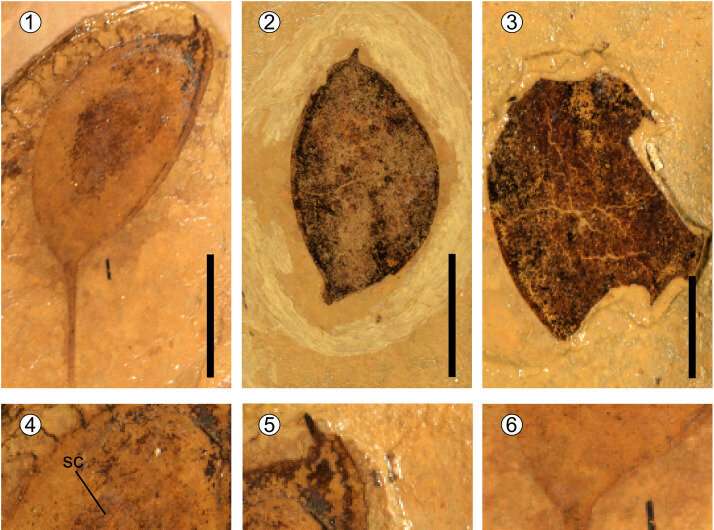Oldest fossil record of Podocarpium from Tibetan Plateau reported

Podocarpium is an extinct genus of Fabaceae. In China, Podocarpium has a rich fossil record, with the most abundant fossils occurring in the Miocene. However, its early fossil occurrences, especially from the Eocene, are still scarce, which prevent us from understanding the early diversification and biogeography of Podocarpium.
In a study published in Review of Palaeobotany and Palynology, researchers from the Xishuangbanna Tropical Botanical Garden (XTBG) of the Chinese Academy of Sciences reported well-preserved fossil pods of Podocarpium from the Lunpola Basi. The fossils represent the first occurrence of Podocarpium from the central Tibetan Plateau. This is also the earliest record of this genus from the Tibetan region and adjacent areas.
Using detailed morphological comparison and geometric morphological analyses, the researchers classified the pod fossils from Lunpola as Podocarpium tibeticum. The fossils are characterized by asymmetrical elliptical valves, olecranon fruit beak, and a clearly oblique base.
"This material comprises the oldest fossil record of Podocarpium from the Tibetan Plateau and adjacent regions," said Su Tao of XTBG.
Using all available fossil records, the researchers discussed the floristic links between the Central Tibetan Valley sub-tropical ecosystem and the wider world during the late Eocene. It seems that Podocarpium had migrated into Tibet from a Paleocene origin in southern China by the late Eocene and then spread westwards to Europe through the Central Tibetan Valley, possibly via island chains along the Neotethys.
The researchers performed paleoecological niche modeling, and the results demonstrated that Podocarpium had the potential for a worldwide distribution during the Eocene, but this potential occupancy space sharply decreased during the Pliocene, leaving only a small range within East Asia.
"Well-preserved Podocarpium fossils found in the late Eocene of the Lunpola Basin in central Tibet shed new light on our understanding for the biotic interchange between Europe and East Asia via Tibet region," said Su Tao.
More information: Wei-Cheng Li et al, Podocarpium (Fabaceae) from the late Eocene of central Tibetan Plateau and its biogeographic implication, Review of Palaeobotany and Palynology (2022). DOI: 10.1016/j.revpalbo.2022.104745
Provided by Chinese Academy of Sciences



















